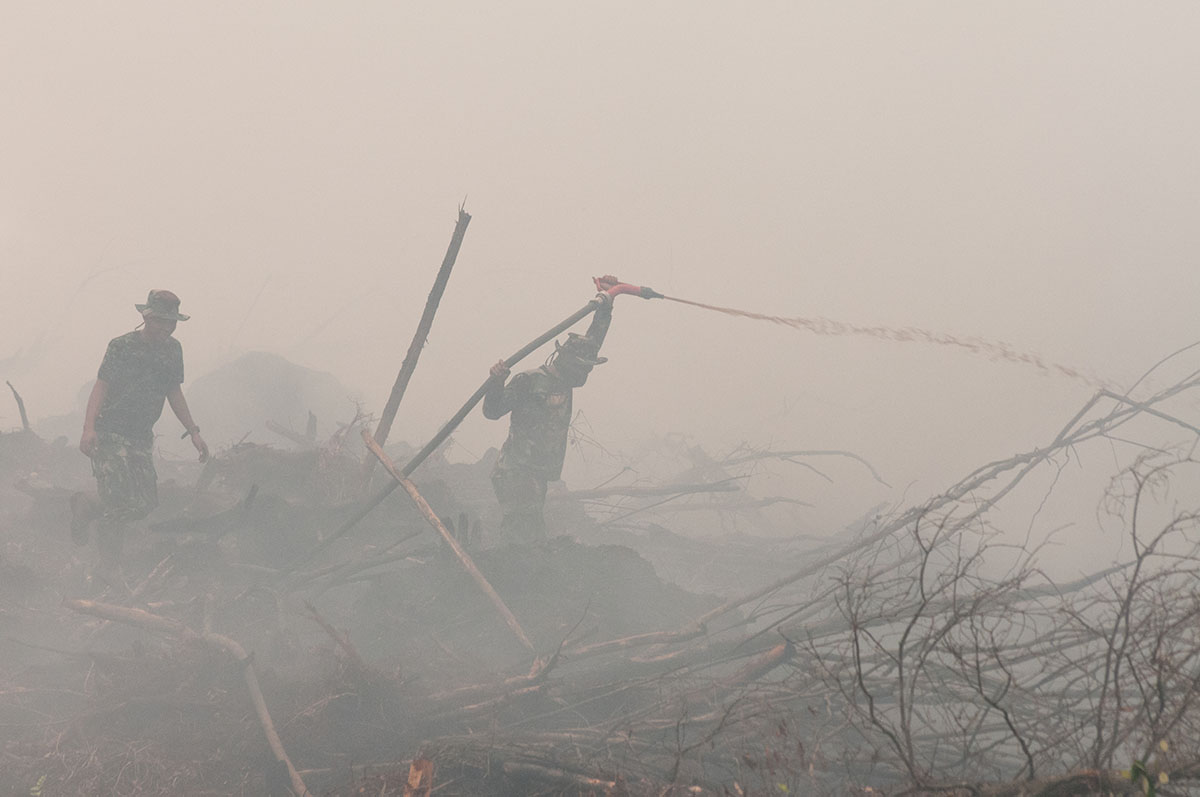CMU Team Uses Machine Learning To Predict Peatland Fires A Major Source of Carbon Dioxide Emissions, Peat Wildfires Can Persist For Years
Byron SpiceThursday, January 28, 2021Print this page.

A team of Carnegie Mellon University seniors has for the first time used deep learning techniques to predict fires and their spread in peatlands, which have become a major source of global carbon dioxide emissions. The machine learning algorithms outperformed previous computer models for peat fires.
The team also assembled the first dataset, PeatSet, designed for the problem of peatland fire prediction. Other researchers can now use this dataset to train their own machine learning programs and to extend the CMU team's work on predicting the severity of peat fires.
"There's not a lot of existing research on fire prediction for peatlands," said Sydney Zheng, a senior computer science major from Virginia. "When you think about fires, you think of forests." But peatland fires are growing in frequency and, because peat is carbon-rich, they emit far more carbon dioxide than forest fires. As demonstrated by Zheng and her fellow students, additional research is much needed.
The team created their neural networks and dataset for a three-month machine learning research competition hosted by the University of Toronto, called ProjectX, in which researchers addressed climate-related issues. The team finished second in the contest's weather and natural disaster prediction category.
Peatlands are wetlands where plant material decomposes to form peat. Normally, fire isn't a problem in these bogs and marshes, but natural droughts cause some peatlands to dry out, while humans drain other peatlands for development. Droughts related to climate change exacerbate this trend.
Though they represent only 3% of the planet's land area, the carbon-rich peatlands store twice as much carbon as the world's forests. In 2015, daily carbon dioxide emissions from Indonesian fires — mainly peat fires — exceeded daily emissions for the entire United States.
Shreya Bali, a senior computer science major from India, said peatland fires can be enigmatic. They can travel underground, cropping up in distant spots, and can smolder beneath snow cover. They tend to be small and burn at relatively low temperatures and so can escape detection by satellites. Peatlands tend to be sparsely inhabited, increasing the chances a fire can go unnoticed.
"Yet once a peat fire erupts, it can be huge," she added.
Machine learning typically requires large datasets, which are used to train the neural nets. But data was scarce for such an understudied area. One of the first tasks for the students was to reach out to researchers with expertise relevant to peatlands, such as emission experts, remote sensing experts, fire experts, peatland fire experts, and data organizers, said Justin Khim, a post-doctoral researcher in the Machine Learning Department. Reid Simmons, the director of the School of Computer Science's AI major and the team's faculty advisory, recruited Khim to mentor the team.
Zheng said even the peatland experts didn't have a coherent view on the subject of peatland fires. But picking their brains proved to be crucial to the team's success.
"However much machine learning can contribute to solving a problem, it is only part of the issue," she said. "You need a good working relationship with other people with other expertise. It's about being open-minded."
The strength of machine learning algorithms, Bali noted, is that they can analyze an immense amount of data, finding patterns and clues that an overwhelmed human would likely miss. One type of algorithm that proved helpful with peatland fires was graph-based models. Because so much of a peatland fire can be underground, these models could treat each hotspot like a node on a graph and then analyze how those nodes might be connected.
But the algorithms that proved most effective were those that they borrowed from the field of natural language processing, or NLP, Bali said. In NLP, these models identify the most important elements of a sentence or paragraph and reason about their relationships. For the peatland work, the models likewise reasoned about the most important data available and the relationships between them.
In addition to Zheng and Bali, the team included Blair Chen, Akshina Gupta and Yue Wu, all seniors in the School of Computer Science, and Anirban Chowdhury, a statistics and machine learning major in the Dietrich College of Humanities and Social Sciences.
Though the students found that their deep learning approach outperformed other computational efforts to predict peatland fire behavior, they also acknowledge that much work remains to be done to make such predictions more precise and reliable.
For Bali, the competition was rewarding because it was her first opportunity to use her computer science skills to address problems associated with global climate change, an issue that has long concerned her.
"We definitely need science to conquer this problem," she added.
Byron Spice | 412-268-9068 | bspice@cs.cmu.edu
